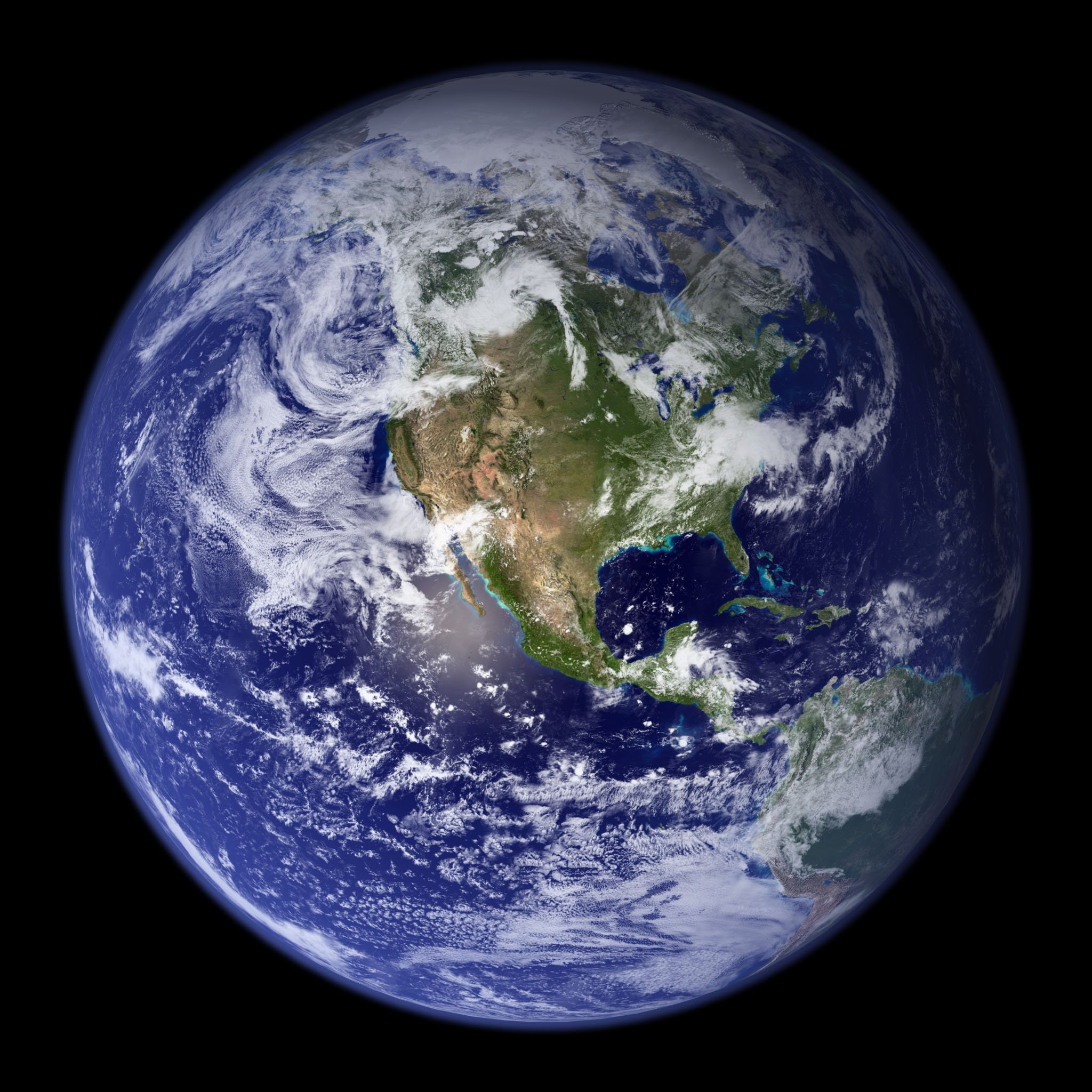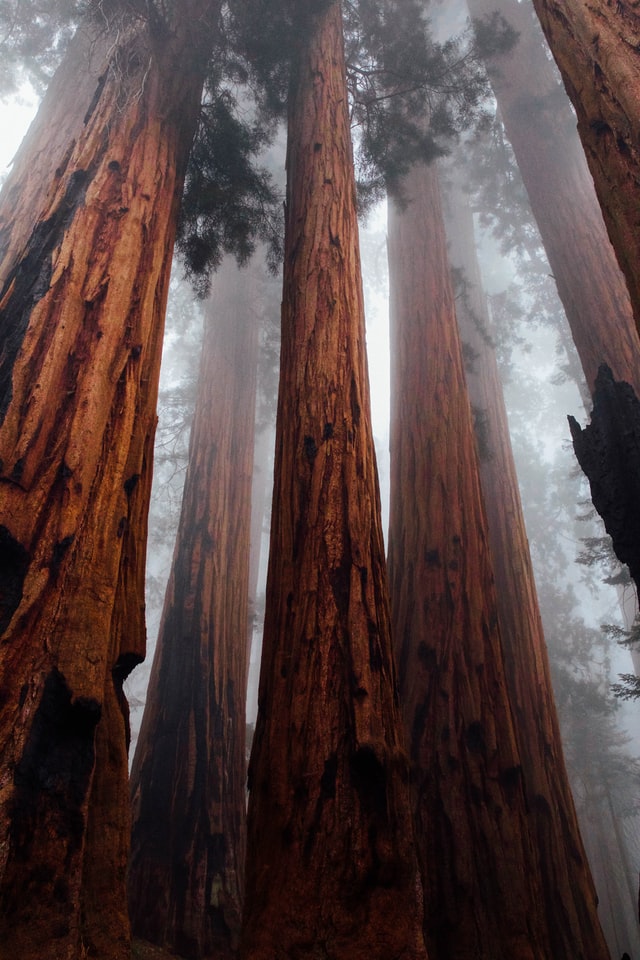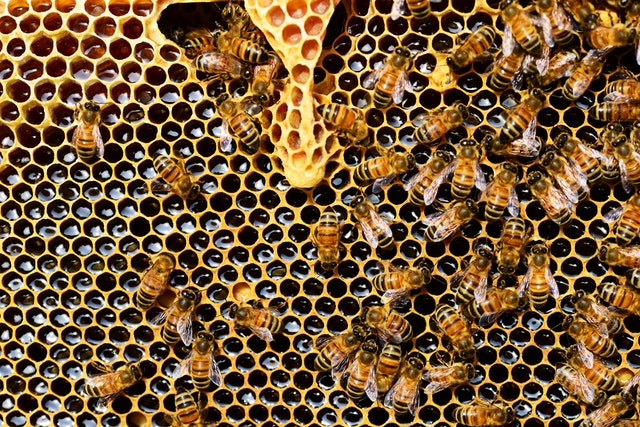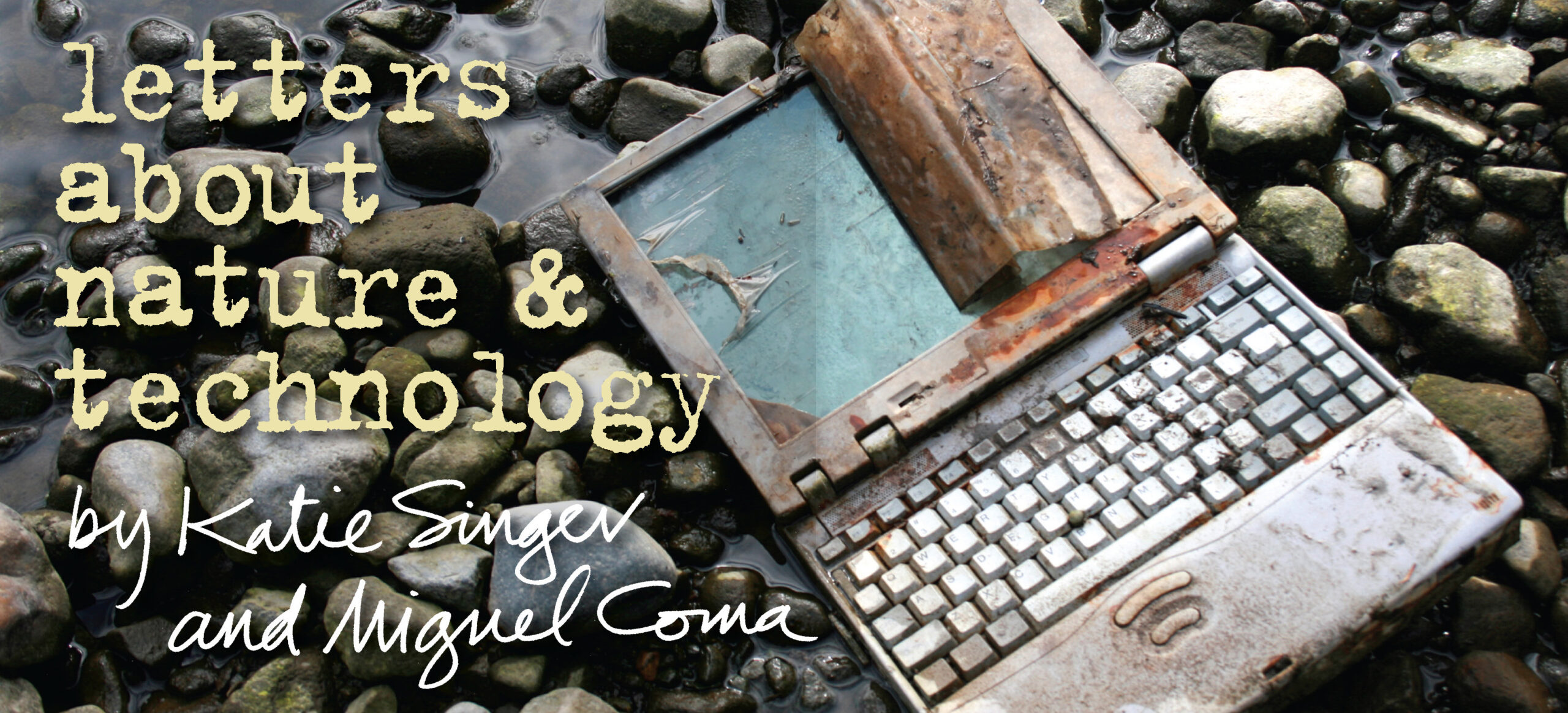Fresh perspective on four and a half billion years
—and a question for humanity
a column about nature and technology
by Katie Singer

The Earth is 4.5 billion years old.
When I wonder what our modern conveniences ask of the Earth, the late David Brower,
father of the modern environmental movement, gives me perspective. Brower used to describe the Earth’s four and a half billion years as a six-day week, with each day representing about 750 million years.[1] When creation got started at midnight on Sunday, the planet was a mass of gasses, water, dust and rock. Charge built up, and the Earth was bombarded by a billion years of lightning storms. At noon on Tuesday, nucleic and amino acids, the building blocks of life, first appeared. Early plants made oxygen and paved the way for animals.
Over the next few days, millions and millions of species emerged—and millions left. By Saturday morning (Brower’s sixth day) at seven a.m., enough chlorophyll had accumulated for fossil fuels to begin forming. That afternoon, around four p.m., great reptiles thrived. Five hours later, they went extinct.
At about three minutes before midnight, apes appeared. We homo sapiens arrived one-half minute before midnight. We hunted and gathered. Moses received the Ten Commandments—rules focused on relating with one another, not with the Earth. As our species’ population grew, we cut down forests for military ships and agriculture.
At one fortieth of a second before midnight, in 1800, one billion people lived on this planet, and the Industrial Revolution began. Its technological advances lowered death rates, lengthened lifespans, created a growing economy and an increasing human population. Manufacturing’s use of natural resources and its waste did not threaten the entire ecosystem’s integrity.
With 1834’s invention of a battery-powered motor, 1859’s discovery of oil (one eightieth of a second before midnight), and our ability to generate electricity and transmit it over long distances (1889), we created a civilization dependent on fossil fuels and electricity. Our technologies did not function compatibly with biological systems. We built CO2-emitting, toxic waste-emitting power plants to smelt ores and manufacture refrigerators, washing machines, radios, TVs and vehicles…that do not biodegrade. Our tools for daily living began to threaten the planet’s ecological integrity substantially. In 1934, FCC engineers prohibited “harmful interference”—broadcasts that interfere with existing radio or TV (and now cellular and Internet) broadcasts—not biological functions. At two-hundredths of a second before midnight, we discovered how to split the atom. In the 1960s, we began extracting elements (previously kept in the ground) like cerium, cobalt, coltan, lithium, neodymium and quartz for color TVs, desktop computers and printers, air conditioners, solar panels and much more.

In 1912, 80% of original California Redwoods still stood. By 1992, 4.5% remained. Photo credit: Victoria Palacios
In 2007, we got smartphones—hand-held Internet portals each made from 1000+ substances. [2] As with desktops, every text, video stream and Google search depends on internationally deployed, energy-intensive, greenhouse gas emitting factories, data centers and access networks: every online activity threatens wildlife habitats. Mobile devices’ infrastructure further increases online activities’ energy consumption.
Since the early 1900s, one hundredth of a second before midnight, our species has consumed four times as many resources as in all previous history. In 1902, the U.S. had 150 miles (241 km) of paved roads. Today, the country has 2,678,000 miles (6,552,000 km) of paved roads. In 1912, when Brower was born in California, the state had 6,000 miles of salmon streams, and roughly 80 percent of the original Redwoods still stood. By 1992, 200 salmon streams and less than five percent of the Redwoods remained. In the 21rst century’s first two decades, the U.S. lost more than 11 million acres of farmland to development.

What do we ask of the Earth when we play video games? Photo credit: Julia M Cameron
Worldwide now, about 1.5 billion households have refrigerators, two billion have air conditioners and 1.4 billion own vehicles. We’ve got more than 14 billion mobile devices and 1.7 billion TVs. U.S. adults spend nearly six hours per day watching videos.

How do modern lifestyles threaten bee colonies?
Internationally, between 200 and 2000 species go extinct every year. This is between 1000 and 10,000 times higher than the extinction rate that would occur without nearly eight billion people [3] manufacturing, consuming and discarding electronic goods and vehicles. In the year ending April 1, 2020, U.S. beekeepers lost 44% of their colonies. [4]
In the time remaining before Brower’s sixth day ends, many people believe that economic growth and production can continue indefinitely. “These people are considered normal,” Brower said, “but they are stark raving mad.” He wondered if we could curtail our addiction to growth and create a sustainable economy. He wanted a snappy way to say “enough.”
Perhaps limits to growth begin with awareness that unless we know our part of the problem, we can’t be part of the solution. Personally, I don’t know how to live without electricity, a refrigerator, a washing machine, a car, a computer, a radio or a telephone. I know that manufacturing and operating each of these depends on extractions and electricity. My husband and I might grow two percent of our food. Most of what we eat therefore depends on roads, trucks, trains, railroads, airplanes, airports, cargo ships, telecommunications and large, commercial farms.
Rudolf Steiner (1861-1925), the founder of Waldorf Schools and biodynamic farming and much more, spoke about the Earth as a living being. He perceived that the planet and humanity were both entering old age.[5] Like all living beings, our species and the Earth will eventually die. How do we prepare for the collapse of ecosystems and social structures? Could we become aware of what we take from the Earth—and question what the Earth asks of us? [6] As we explore these questions, we’ll need humility, courage and community.
REFERENCES
- https://centerforneweconomics.org/publications/its-healing-time-on-earth/ It’s Healing Time on Earth by David Brower, 12th annual E.F. Schumacher Lectures, October 1992
- ourweb.tech/letters-3/
- https://wwf.panda.org/discover/our_focus/biodiversity/threatsto_biodiversity/
- https://beemission.com/blogs/news/colony-collapse-disorder-takes-highest-toll-in-4-years-on-us-honeybees
- Steiner suggested that rather than trying to eliminate or even slow technology’s growth (which he perceived as impossible), we develop counterbalances to it. OurWeb.tech/letter-15.
- Reports about Steiner and this question come from anthroposophist and computer scientist Andrew Linnell (mystech.co).
Katie Singer writes about the energy, extractions, toxic waste and greenhouse gases involved in manufacturing computers, telecom infrastructure, electric vehicles and other electronic technologies. She believes that if she’s not aware that she’s part of the problem, then she can’t be part of the solution. She dreams that every smartphone user learns about the supply chain of one substance (of 1000+) in a smartphone. Her most recent book is An Electronic Silent Spring. She currently writes about nature, democracy and technology for Meer.com. Visit www.OurWeb.tech and www.ElectronicSilentSpring.com.
This article was originally published by Meer.com.
